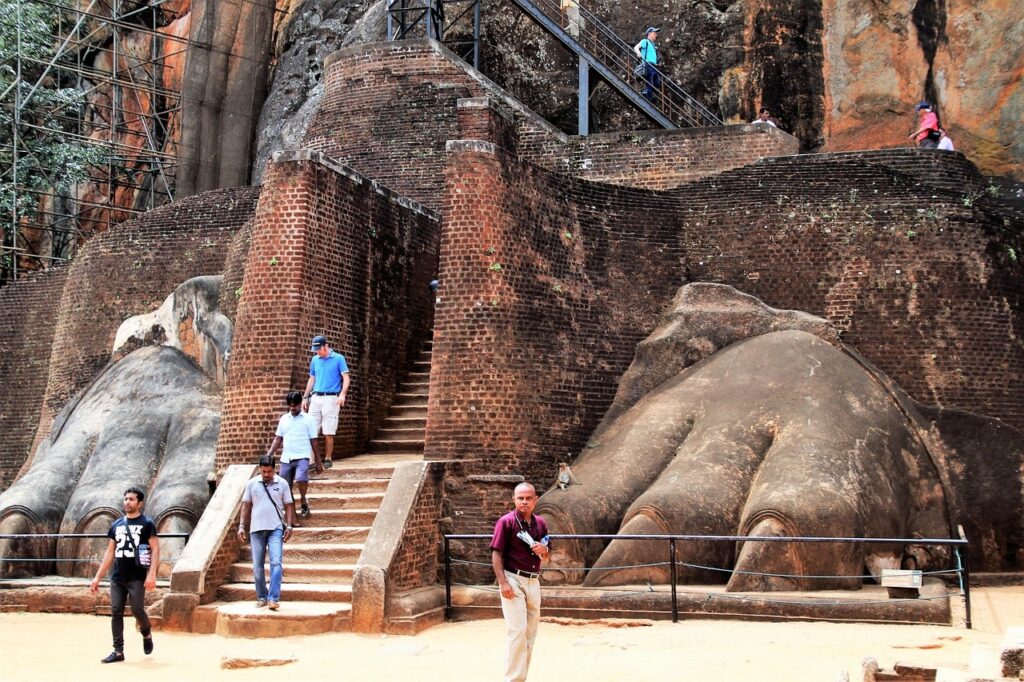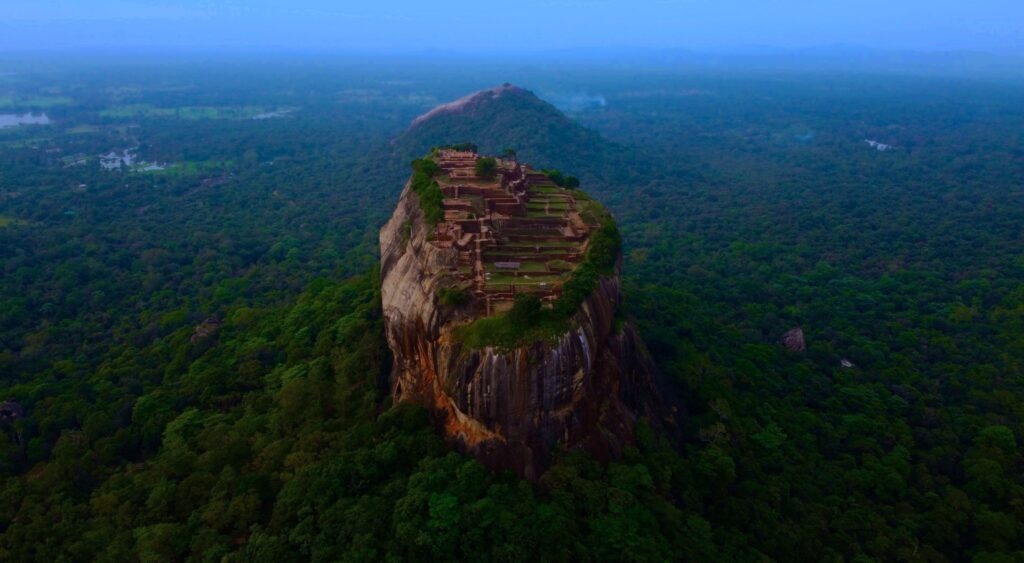When you visit Sri Lanka’s famous Sigiriya Rock Fortress, one of the first things that’ll catch your eye is the majestic Lion’s Paw Entrance. It’s more than just an entryway—it’s an unforgettable landmark that adds mystery, history, and a touch of grandeur to your adventure. If you’re planning to climb Sigiriya or simply curious about its wonders, you’ve just found the perfect starting point. Let’s take a fun stroll through the history, beauty, and awe of the Lion’s Paw Entrance.
What Is the Lion’s Paw Entrance?
The Lion’s Paw Entrance is exactly what it sounds like: a giant stone sculpture shaped like a lion’s paws, guarding the gateway to the summit of Sigiriya Rock. These enormous paws, carved directly from the rock, sit midway up the fortress and once belonged to a much larger statue of a seated lion. Sadly, the rest of the lion didn’t survive the test of time, but even today, those two paws are enough to take your breath away.
As you walk up the final staircase leading to the summit, you literally pass between the two paws. It’s dramatic, it’s ancient, and it feels like stepping into a fantasy story—except this one’s real, and you’re part of it.
A Roaring History Behind the Paws
You’re not just walking through a cool entrance—you’re walking through centuries of history. The Lion’s Paw structure is believed to have been built in the 5th century AD by King Kashyapa. He wanted Sigiriya to be more than a fortress; he wanted it to be a symbol of power and divine rule. The massive lion was designed to show strength and royalty, fitting for a king who built his palace on top of a 660-foot-tall rock.
The lion also had cultural meaning. In ancient Sri Lankan art and folklore, lions symbolized protection and courage. So imagine this: visitors approaching the king’s palace would climb a grand staircase, passing under the chest of a stone lion, as if being swallowed and reborn into the presence of royalty. Pretty epic, right?

The Best Times to Visit Your Lion’s Paw Entrance
You’ll want to plan your visit during golden hour for magical lighting. Early morning offers cool temperatures and fewer crowds for your exploration. The sunrise casts warm hues across the ancient stone surfaces beautifully.
Your evening visit will reward you with spectacular sunset views. The rocks glow like fire as daylight fades into darkness. You’ll witness colors that seem almost too vibrant to be real.
Winter months provide you with comfortable hiking conditions and clear skies. Summer visits require early starts to beat the desert heat effectively. You should always bring plenty of water regardless of season chosen.
Photography Tips for Capturing the Perfect Shot
You’ll need a wide-angle lens to capture the entrance’s full grandeur. The massive scale requires stepping back to frame everything properly together. Your best shots will include people for scale and perspective reference.
Drone photography offers you unique aerial perspectives of the formation. You can capture angles impossible from ground level viewpoints alone. Always check local regulations before flying your drone in the area.
Your camera settings should account for high contrast lighting conditions. Bracketing exposures helps you capture both shadows and highlights perfectly. HDR processing will bring out details you might otherwise lose completely.
Consider bringing a tripod for sharp images in low light. You’ll appreciate the stability during those magical golden hour sessions. Long exposure shots can create dreamy cloud movements above the entrance.
Climbing with Kids or Seniors? No Problem!
You might be wondering if this climb—and the paws—are suitable for everyone. Good news: while the final climb to the summit is a bit of a challenge, the path up to the Lion’s Paw Entrance is manageable for most ages.
There are handrails, plenty of resting spots, and loads of fellow travelers to share a friendly chat or two. If you have kids, they’ll likely be amazed by the size of the paws and might even feel like they’re entering a real-life jungle book adventure. Seniors often find the lower levels of Sigiriya enjoyable even if they skip the summit.
So, bring your whole crew—the Lion’s Paw won’t disappoint!

Why the Lion Still Roars Today
Even though only the paws remain, the Lion’s Paw Entrance still packs a powerful punch. It’s a lasting symbol of Sri Lanka’s creativity, engineering, and artistry. Tourists from all around the world come here, not just for the views or the ruins, but to stand in awe of this ancient masterpiece.
The fact that a structure built over 1,500 years ago still evokes such strong emotions is a testament to its timeless magic. And once you walk between those paws, you’ll understand exactly why it continues to inspire travelers, historians, and dreamers alike.
Tips for Visiting the Lion’s Paw Entrance
If you’re planning a visit to Sigiriya, it’s helpful to know some key travel tips. To make the most of your experience at the famous Lion’s Paw Entrance, here are a few tips just for you:
- Wear comfortable shoes: The stone steps can be uneven, and you’ll want good grip for safety.
- Arrive early: The morning light is magical, and it helps you avoid both the crowds and the heat.
- Bring water: Staying hydrated is key, especially if you’re tackling the full climb to the summit.
- Hire a guide: If you want the full story, a local guide can bring the site to life in amazing ways.
- Respect the site: Don’t climb on the paws or scratch anything—this place is a world heritage treasure!
Final Thoughts: You and the Lion
Visiting the Lion’s Paw Entrance at Sigiriya is more than a tourist activity—it’s an experience you’ll carry with you long after you leave. Whether you’re a history lover, an adventure seeker, or just someone who loves cool places, the paws are ready to welcome you.
So go ahead—climb the steps, touch the ancient stones, and walk between the paws like the royalty you are (even if it’s just for a moment). The Lion’s Paw Entrance isn’t just a gateway to a rock; it’s a portal into a world of myth, history, and wonder.



